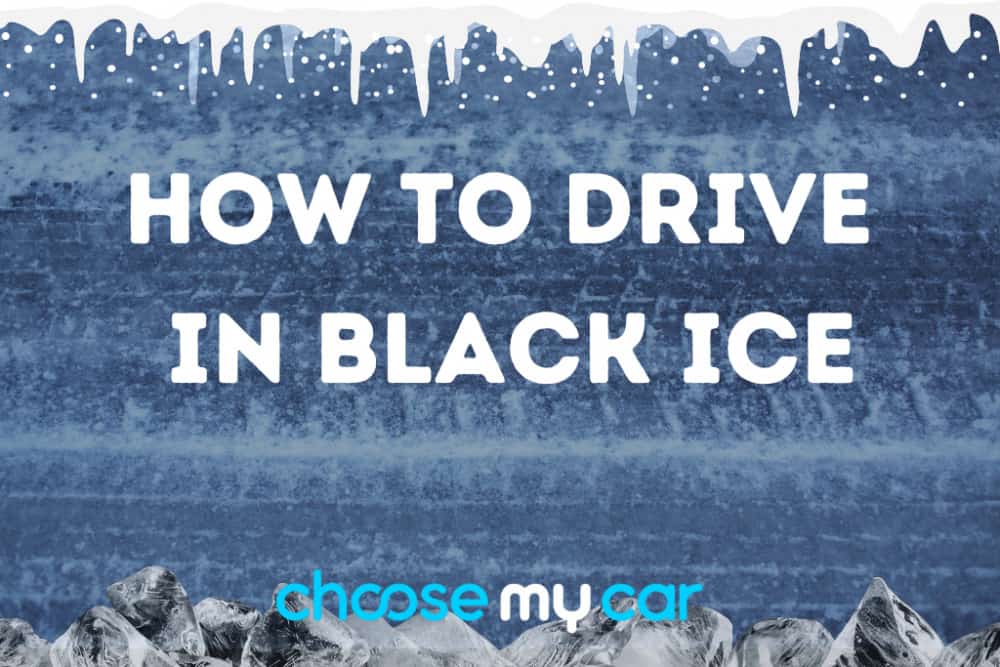Driving conditions can become treacherous during the winter period. Evenings become darker, reducing visibility. Rain falls hard and snow too, making it difficult to judge distances and speeds.
But what is the most difficult aspect of driving in the winter? Driving through ice. After the snow has settled, cars have driven all over it, and puddles of water form, there is a chance more ice will be created, causing multiple hazards when driving. Potentially the biggest hazard of all is black ice.

What is black ice?
Black ice is a type of ice that is so thin it often appears more like a glaze on the road. It’s more dangerous than other types of ice on the road because it’s difficult to identify, and often you won’t know it’s there until you drive over it. It’s just one of the reasons why driving slower the days after snow has fallen is a good idea. The ice itself is not black, but it’s completely transparent, yet again making it difficult to detect.
After snow has fallen, a lot of it will melt as temperatures rise. But as black ice is such a thin layer, it can remain on the roads and streets long after the majority has melted. It only takes a small amount of water (or semi-melted snow) and some overnight freezing temperatures to create black ice. Because of its thin nature, it doesn’t take long for it to freeze.
How to spot black ice on roads
It can be challenging because as we’ve mentioned black ice is transparent. But if you’re paying close enough attention you can detect it. Most of us will drive on roads we travel on a regular basis, whether that’s driving to work, dropping the kids off at school or heading to a favourite weekend activity. This means we have a sense of familiarity with the road. We know roughly where puddles form and we’d be able to detect something that was out of place. Now, this doesn’t guarantee that you’d always be able to spot black ice, but it does increase your chances if you’re paying attention. However there are areas where you won’t notice black ice at all, typically these are on bridges, tunnels and flyovers.
Black ice will appear as a glaze or shiny surface. If it looks like a shallow puddle, and temperatures have been low lately, there’s a good chance it’s black ice. It’s difficult to detect even when you’re extremely familiar with the roads, so here are a few tips on how to drive in black ice.
How to drive in black ice
The first rule of driving in black ice conditions is that if you hit a patch, don’t panic, and do nothing with your feet. Don’t hit the brakes and don’t touch the accelerator. You should prioritise keeping your car on the road and this is only doable with the steering wheel, so keep your hands firmly on it, steering straight ahead.
If you’re not too out of control, you can use the gears to slow your car down, but you want to avoid sudden movements as this will cause the car to become more difficult to control. As long as you’re not speeding around a corner when you hit the black ice, you should be able to control your car and slow it down with no issues.
But what happens if you’re skidding when turning? How can you get out of a skid? There’s a simple trick; turn into the skid. For example, if the back end of your car is spinning out to the right, turn gently to the right. No sudden movements, no braking, and keep your hands on the steering wheel. Be sure not to jolt to the right with the wheel, we’re steering gently into the skid to avoid an accident, not trying to make things worse with sudden and violent actions.
It’s important to adjust your general driving habits when on roads with ice. You’ll need to keep larger distances between you and any cars in front, but you’ll also need to slow down your speed. In some cases this is significantly below the speed limit. The gap between you and the car in front should be around 20 seconds in severe conditions.
One last tip is to make sure you have set yourself up for success, by checking your car. Make sure your wipers are sufficient to clear any snow or ice, that you have enough wiper fluid, and make sure your car is stocked with food, water, and layers should you break down. While you don’t need to have winter tyres on your vehicle, it can improve the performance of your car when driving on black ice.






